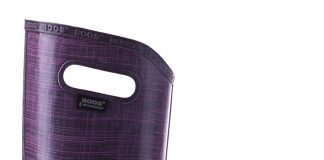“I sold my first horse portrait when I was 13 for $3,” recalls Joan E. MacIntyre. “Then I sold another when I was 18 for $35. I then quit my job and decided to become a horse painter. That’s all I’ve done ever since.”
Her love of horses goes back several decades. “It all started when I saw the milkman’s horse in Milwaukee when I was about 3 years old,” she laughs, “and it’s been going on ever since.”
She began riding at age 9, but had to wait until she was 18 until she had her first horse, a Saddlebred mare. “My first love was Saddlebreds, and then I showed Morgans for a while. When I came West, I got involved with Arabians.” Because of her involvement with a variety of breeds, she has been able to study the unique conformation of each, as well as its movement and temperament qualities.
While her talent is certainly inborn, she has backed it up with a solid education. “I went to Temple University, the Tyler School of Art and the Phoenix School of Art. Since then, I have taken a lot of workshops, and still do whenever possible.”
Doing equine portraiture and fine art takes a great deal of time and effort. MacIntyre’s schedule is as busy as any working woman’s. Instead of sitting at a computer or in a board room, she works at a canvas in her home studio. A typical day involves first “doing my chores. I must go out and feed my horses in the morning. After that, I usually start painting. Depending on what I have to do, whether it’s errands such as picking up supplies or having a piece framed, I try to paint most of the day. I usually quit around 5:00 p.m. or so. Sometimes, however, when I have a lot of deadlines, I work through the night.”
When MacIntyre is commissioned for a painting, she works from photographs, but also travels to see the horse in person. She will confer with her client on several occasions to make sure that she captures not only the conformation of the individual horse, but its personality. “I have some clients who will tell me that the tail needs extra hairs, or that the horse doesn’t typically hold its ears in that position. I’ll modify the painting until the client feels it is right.” Her ability to make the paintings “just right” has made her work very sought after, and keeps her quite busy.
While all artists are different, any artist who wants to have a career in the equine world would be wise to follow MacIntyre’s example. She enters her artwork in art shows. She is affiliated with several art organizations, including the Society of Western Artists and the Horse Artists Association. She has had work printed in a variety of equine publications. She markets herself with a four-color brochure. Her attitude is professional when dealing with clients. And she meets her deadlines.
She also never stops honing her craft. Prior to moving to California’s Central Valley mountains, she was doing only commission work, mostly of racehorse portraits. “After I moved up here to the mountain country from Southern California, I got more interested in doing other things. For years, I was involved in the racetrack; I was married to a trainer, had several racehorses of my own, and was even moderately successful. That was my life, just doing commissions of racing Thoroughbreds. After I moved up here, I got further and further away from it, and got interested in doing landscape, western scenes and just about everything else.
“Also, I used to paint only after I got a commission. And that kept me pretty busy, but after I got up here, I startedto just paint everything. Every day, now, I paint four or five hours.”
Read on to learn about another equine artist.






keep painting horses
Always keep painting and capturing the beauty of horses!
neat
that sounds cool to do something you love for your career.
cool–where can we see some of her paintings?
where can i see her paintings?????
I love art with horses in it alot!!!
i wish i could see some pictures! im a painter too but i dont do alot of horses, i should try more.
i want to see some paintings because i love art